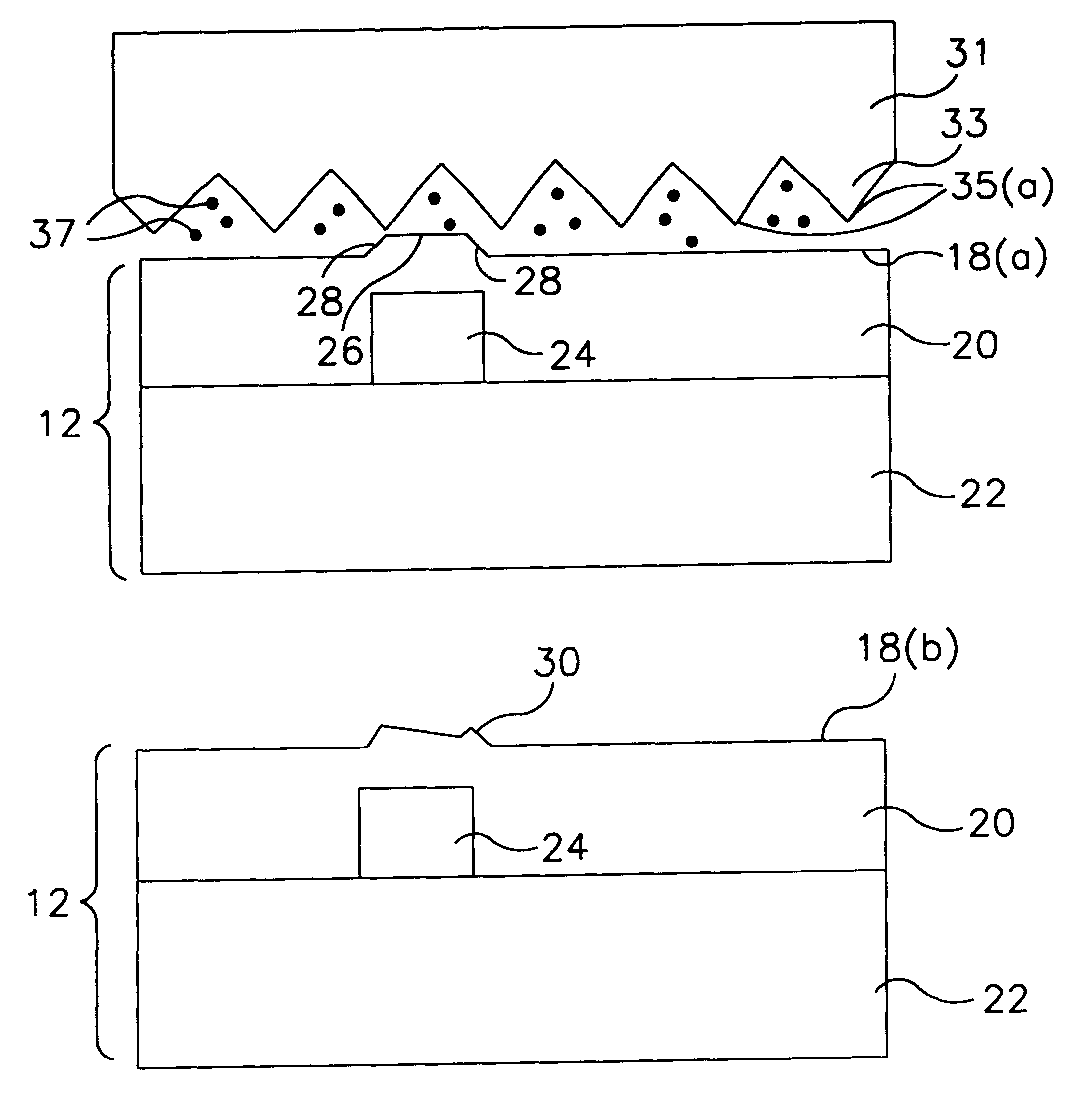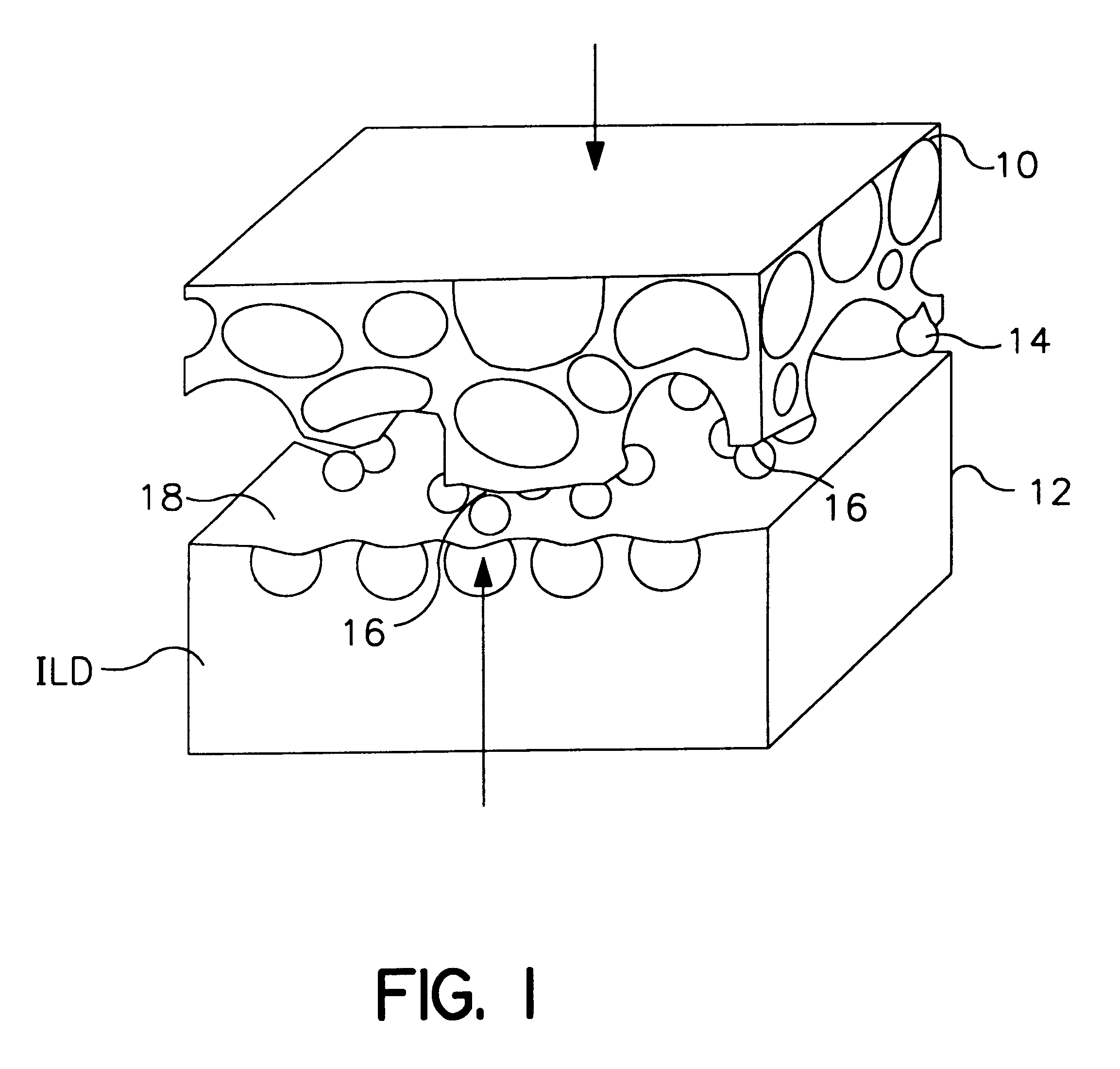Methods and apparatus for chemical mechanical planarization using a microreplicated surface
a micro-replicated surface and chemical mechanical technology, applied in the field of micro-replicated surfaces, can solve the problems of unsatisfactory presently known polishing techniques in several regards, and insufficient global uniformity and local planarity of known polishing techniques
- Summary
- Abstract
- Description
- Claims
- Application Information
AI Technical Summary
Problems solved by technology
Method used
Image
Examples
Embodiment Construction
Referring now to FIG. 1, presently known CMP processes typically employ a rigid foam polishing pad 10 to polish the surface of a workpiece 12, for example an integrated circuit layer. An abrasive slurry comprising a plurality of abrasive particles 14 in an aqueous medium is employed at the interface between the pad surface and workpiece surface. Cellular pad 10 comprises a large number of randomly distributed open cells or bubbles, with exposed, irregularly shaped edges forming the junction between cells. Those edge surfaces 16 which come into contact with surface 18 of workpiece 12 are known as asperities, and support the load applied to pad 10 which results in frictional forces between pad 10 and workpiece 12 as pad 10 is moved laterally (e.g., in a circular planetary or linear manner) with respect to workpiece 12 during the polishing process.
With continued reference to FIG. 1, abrasive particles 14 within the slurry are urged onto surface 18 of workpiece 12 by asperities 16, crea...
PUM
| Property | Measurement | Unit |
|---|---|---|
| height | aaaaa | aaaaa |
| height | aaaaa | aaaaa |
| height | aaaaa | aaaaa |
Abstract
Description
Claims
Application Information
 Login to View More
Login to View More - R&D
- Intellectual Property
- Life Sciences
- Materials
- Tech Scout
- Unparalleled Data Quality
- Higher Quality Content
- 60% Fewer Hallucinations
Browse by: Latest US Patents, China's latest patents, Technical Efficacy Thesaurus, Application Domain, Technology Topic, Popular Technical Reports.
© 2025 PatSnap. All rights reserved.Legal|Privacy policy|Modern Slavery Act Transparency Statement|Sitemap|About US| Contact US: help@patsnap.com



